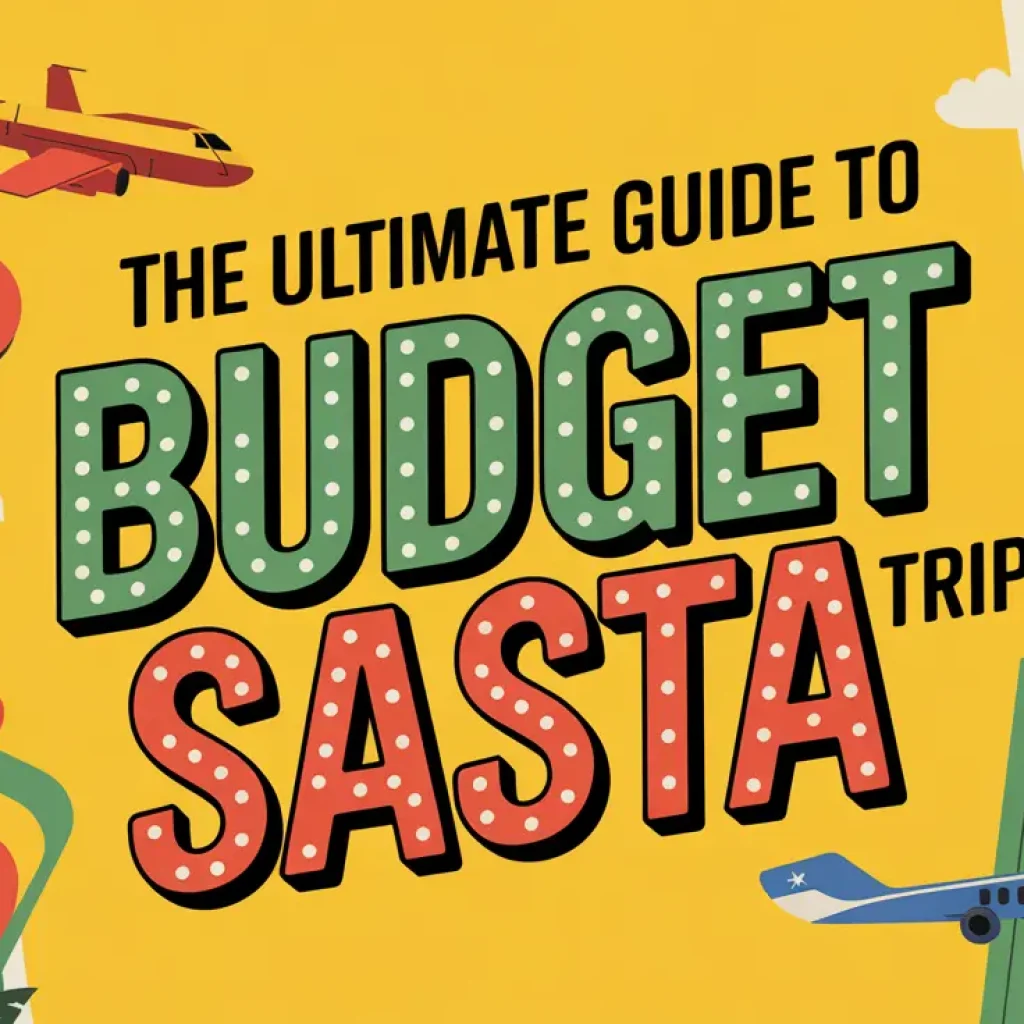Cheapest eSIM for International Travel: Ranked & Reviewed 2025
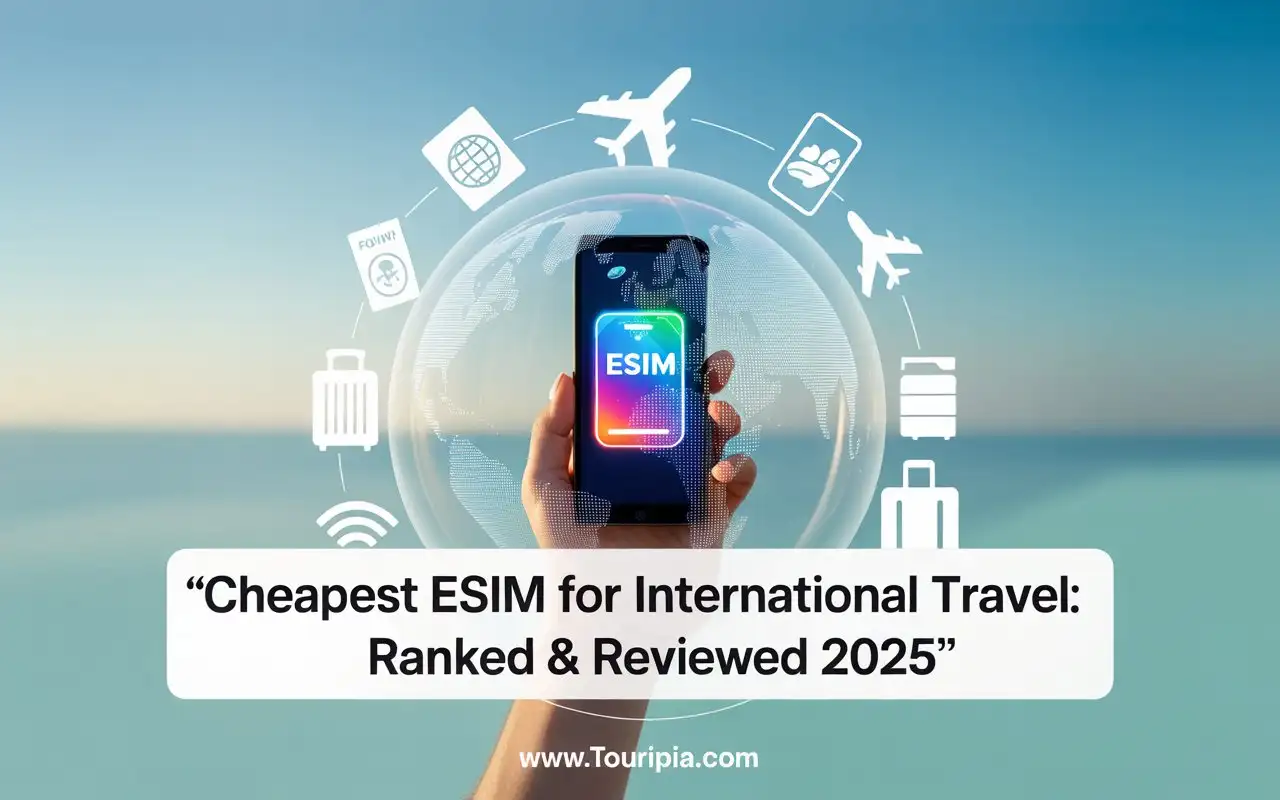
The cheapest eSIM for international travel isn’t just about saving a few dollars—it’s about stepping off a plane in a new country, switching on your phone, and having data within seconds.
No more standing in line at airport kiosks, fumbling with tiny SIM card ejector tools, or struggling with language barriers just to get a local SIM. In 2025, I’ve found myself landing in places as varied as Istanbul, Mexico City, and Singapore, and in each case, my eSIM was already active before I even passed through immigration.
Over the past few years, I’ve tested dozens of providers across continents—Southeast Asia, Latin America, Europe, and the United States of America. The market has exploded. Competition has driven prices down, new regional bundles have emerged, and even global plans have become surprisingly affordable.
Travelers now have more control than ever: you can compare the best and cheapest eSIM for international travel in minutes, install it instantly via QR code, and connect to local networks without hunting for a store.
Of course, cheap doesn’t always mean good. While one provider might boast the cheapest eSIM Australia for international travel, another could offer the cheapest eSIM USA or the most affordable global eSIM with wider coverage.
My aim in this guide is to cut through the noise, ranking and reviewing providers based on real-world usage—not just marketing claims.
I’ll cover speed, reliability, ease of setup, customer support, hidden fees, and yes, the cheapest eSIM for international travel you can actually depend on in 2025.
What is an eSIM & Why It Matters for International Travel?
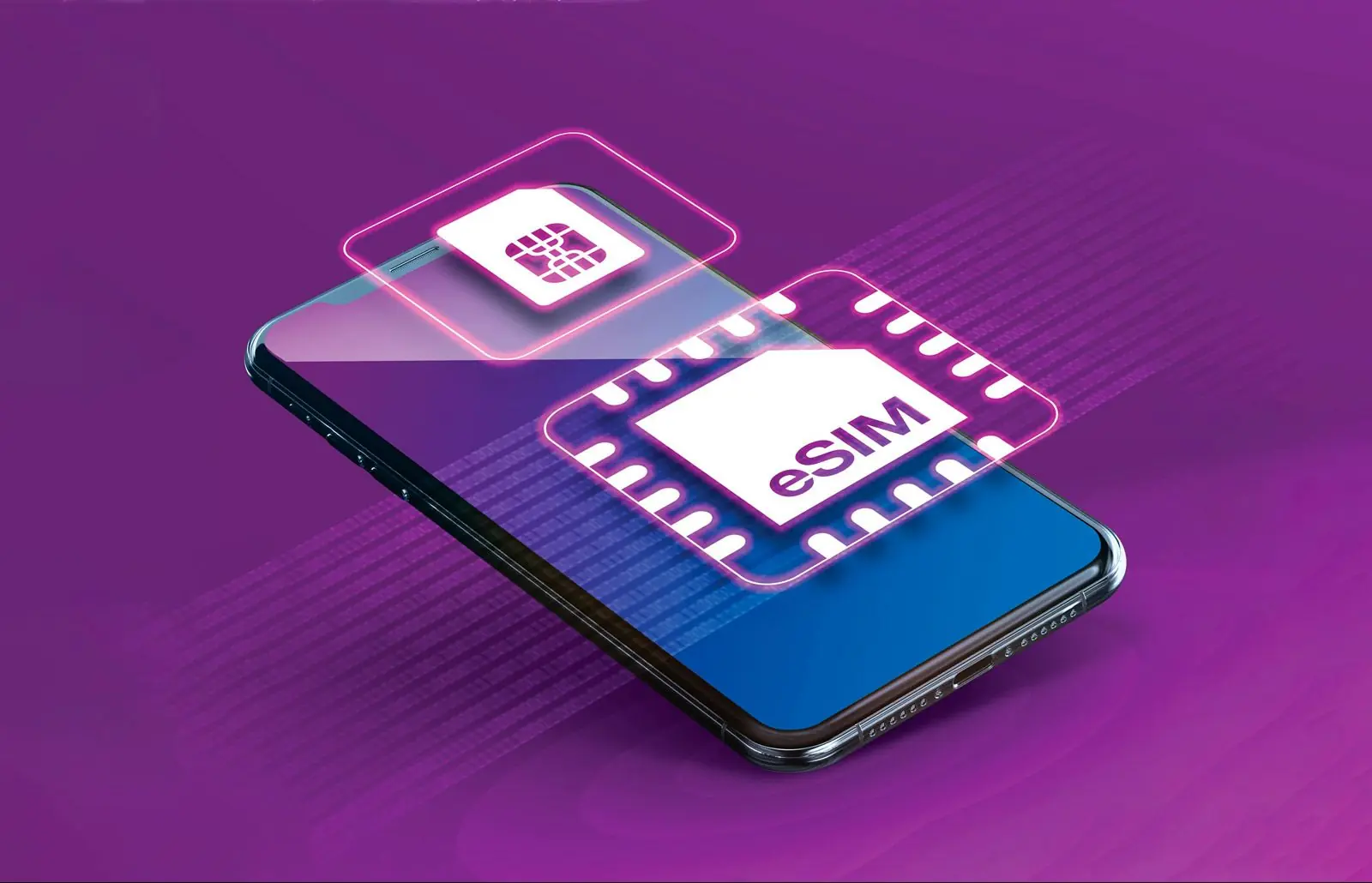
An eSIM, short for “embedded SIM,” is essentially a digital SIM card built directly into your device. Unlike the old physical SIM cards you had to pop out and replace, eSIMs let you switch carriers and plans without touching a thing. It’s as simple as scanning a QR code, or in many cases, downloading a plan straight from an app store like Google Play or Apple’s App Store.
For travelers, the benefits are obvious. I can keep multiple profiles on my iPhone XR or Apple iPhone XS, which means I keep my home number active for banking sites and two-factor authentication while using a regional eSIM for cheap data. No juggling tiny cards. No fear of losing my local SIM when I return home. The flexibility is unmatched.
But there are limits. Not every carrier supports eSIMs yet, and compatibility varies across devices. In 2023, I had trouble finding a plan in Papua New Guinea, but by 2025, even regions like the Northern Mariana Islands and Saint Pierre and Miquelon have started appearing on coverage maps.
Some providers still impose restrictions—certain data plans won’t work for hotspot tethering, and not every cheap eSIM plan supports calling.
The real shift in 2025 is adoption. More carriers, more travel-focused eSIM providers, and a broader range of affordable prepaid eSIM plans are now available.
Whether you’re heading to Europe for a quick city break or moving between countries in South East Asia, eSIMs have become not just a convenience but the standard tool for staying connected abroad.
Factors to Consider When Choosing the Cheapest eSIM
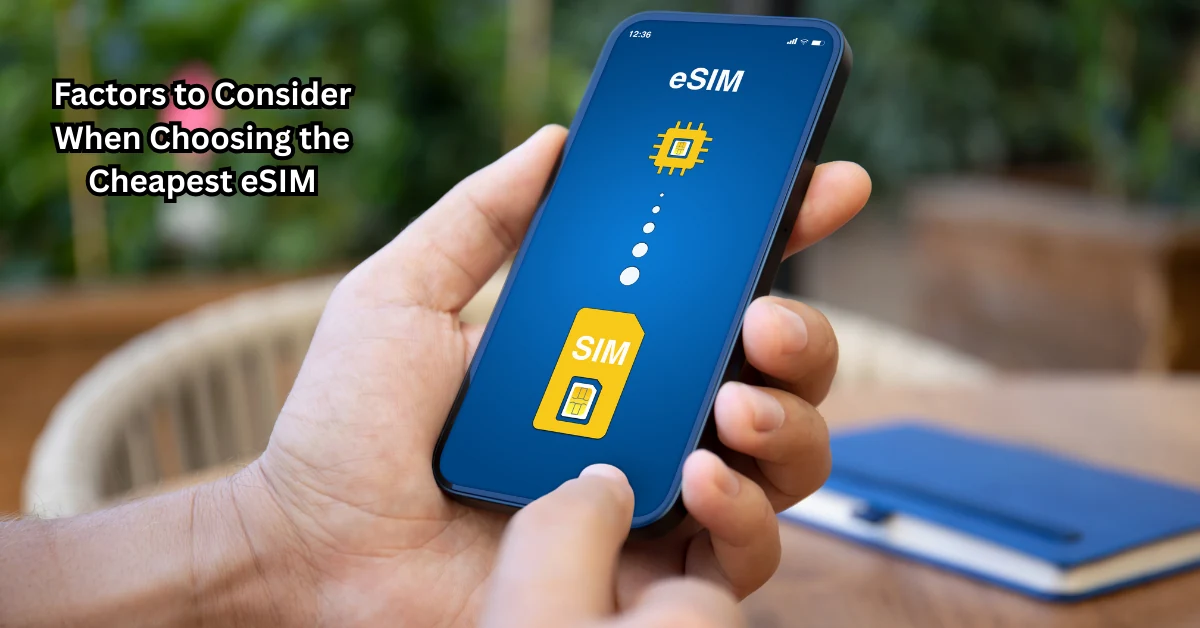
Finding the cheapest international eSIM isn’t just about spotting the lowest sticker price. I’ve learned that what looks like a bargain can sometimes end up costing more if you overlook the fine print.
Here’s what I pay attention to after years of trial and error:
1. Price per GB vs. Package Deals
A plan might advertise as the cheapest eSIM data option, but if you burn through it in two days, the top-up costs add up. Regional bundles in Europe or Asia-Pacific often deliver far better value than global eSIMs when you’re traveling within one continent.
2. Coverage
Not all eSIMs are equal. Some are country-specific (great if you’re staying put), others cover regions like Latin America or South East Asia, and a few truly global eSIMs offer international roaming in 150+ countries. I once relied on a “cheapest global eSIM” that worked perfectly in Spain but left me stranded offline in Morocco—coverage maps matter.
3. Speed & Reliability
Cheap data means little if you’re stuck on 3G. Most providers advertise 4G or 5G speeds, but throttling is common. I’ve seen unlimited data plans quietly slow to unusable speeds after 5GB. Always read the small print.
4. Ease of Setup
The best providers offer instant connectivity. With apps like the Airalo app or SIM Manager, you just scan a QR code and you’re online. Others make you dig through a manufacturer’s website for APN settings. That difference can mean 10 minutes of convenience versus an hour of frustration in an airport café.
5. Hidden Fees
Watch out for VAT, activation fees, or automatic plan renewals. I once bought what looked like the cheapest eSIM carrier plan in Singapore, only to discover a 20% tax added at checkout.
6. Customer Support
When things go wrong, 24/7/365 support makes all the difference. Some providers offer instant chat help, while others leave you waiting days for an email. On a work trip in Canada, a responsive support team saved me after a failed QR code install.
Ultimately, the cheapest eSIM plan Canada, Singapore, or the USA might not be the cheapest once you factor in speed, reliability, and hidden costs. That’s why the following ranked list is based not only on price but also on how well these eSIMs perform in real travel conditions.
Cheapest eSIM Providers for International Travel: Ranked & Reviewed (2025 Edition)

Below are the providers I’ve tested repeatedly over the past two years. Each one has its strengths—and quirks—but all make the cut for 2025.
1. Airalo
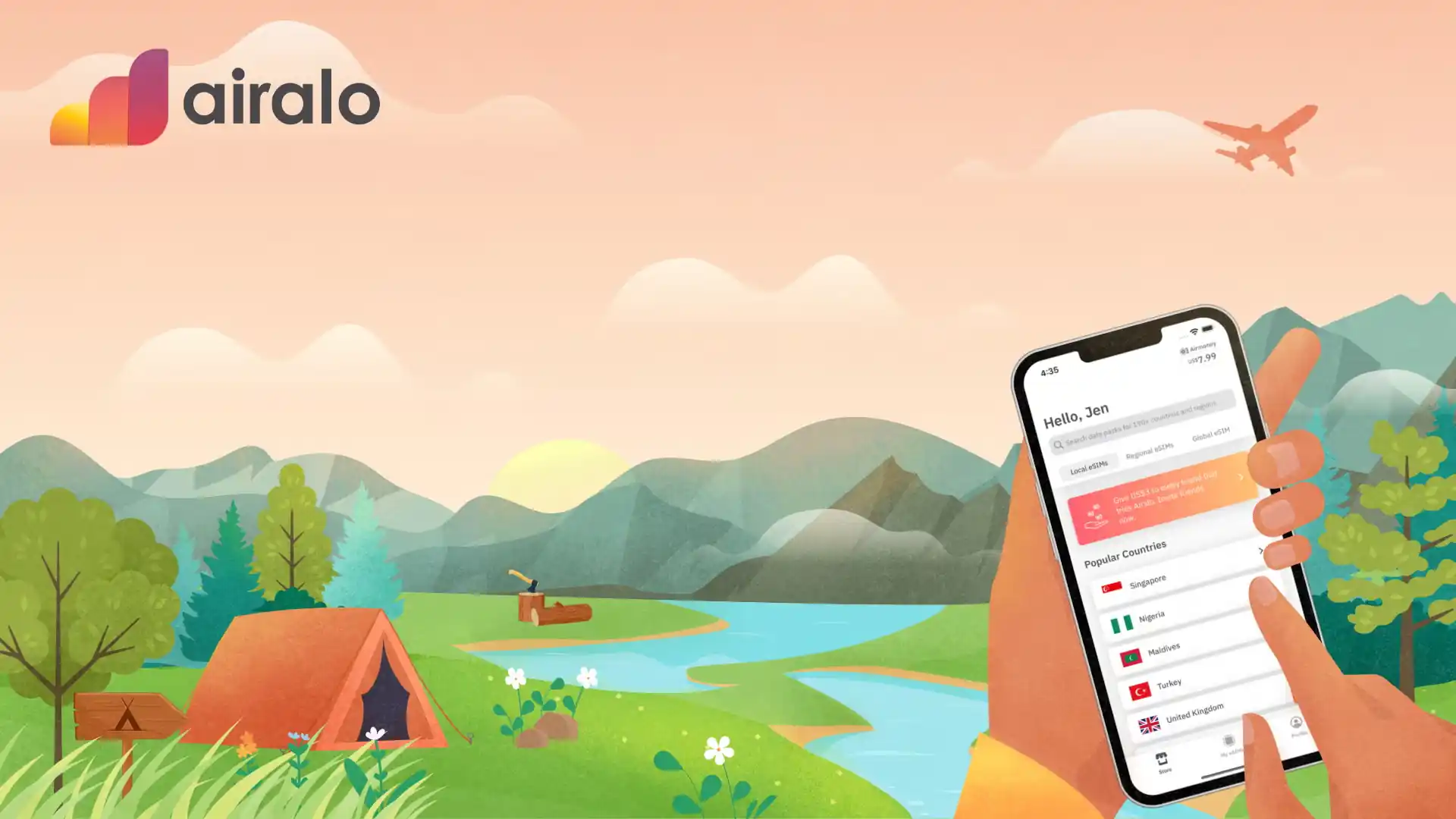
Airalo is often the first name travelers mention when talking about affordable eSIMs, and for good reason. With coverage in over 200 countries, it’s the go-to for global adventurers.
I’ve personally used Airalo in South East Asia, Europe, and the United States of America, and found their regional eSIMs among the cheapest on the market.
- Plans & Pricing: Regional bundles start around $4.50 for 1GB, while global packages offer flexible options for frequent flyers. It’s often the cheapest international eSIM for short trips.
- Ease of Use: The Airalo app is intuitive—you buy, scan the QR code, and you’re online in under five minutes.
- Coverage: Strong in Europe and Asia-Pacific; occasional gaps in remote Latin America.
- Pros: Affordable rates, instant connectivity, great user reviews.
- Cons: Limited voice/SMS options, data-only in most cases.
- Best For: Budget-conscious travelers hopping between multiple countries.
- Insider Tip: Keep an eye on promo codes; Airalo frequently runs discounts through their app store listings.
2. Holafly
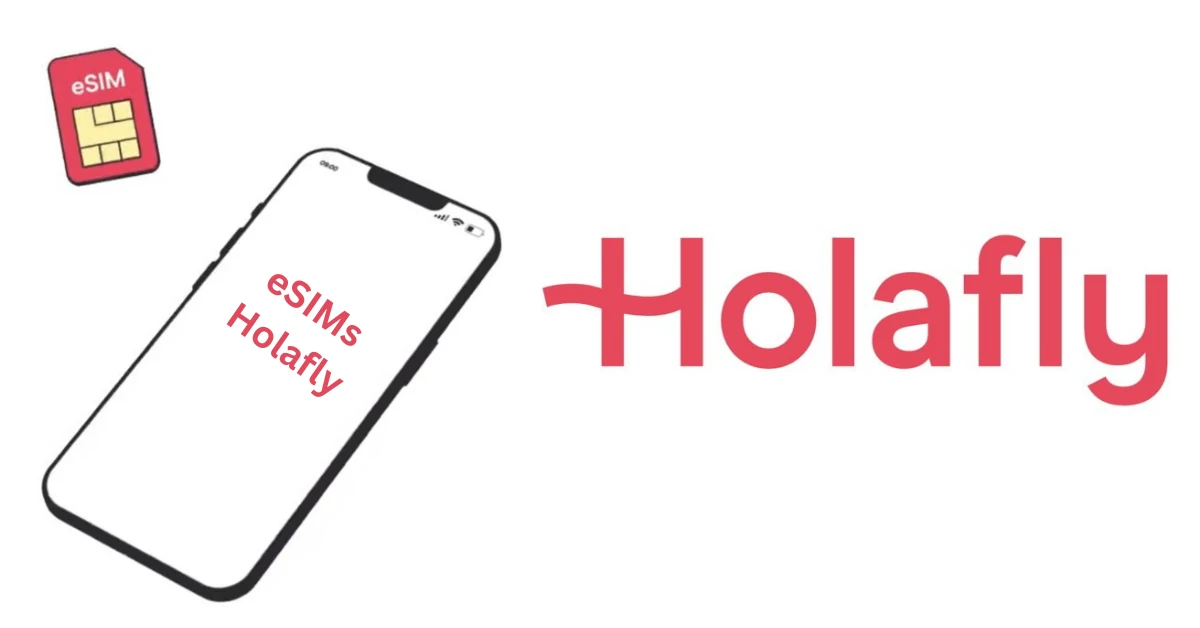
Holafly is famous for unlimited data plans—something I tested across Spain and Italy last fall. While their pricing isn’t always the lowest, the convenience of not tracking GB usage is appealing.
- Plans & Pricing: Starts at around $19 for 5 days of unlimited data. Not always the cheapest eSIM data option, but predictable.
- Ease of Use: Setup is fast with QR codes, though you’ll need to manage expiration dates carefully.
- Coverage: Strong across Europe and North America, with growing reach in Asia.
- Pros: Unlimited data, no top-up stress.
- Cons: Higher cost than capped plans, and hidden throttling kicks in after heavy use.
- Best For: Travelers streaming or uploading lots of content.
- Insider Tip: Don’t rely on “unlimited” for work-critical tasks. Speeds drop significantly after about 10GB in practice.
3. Nomad eSIM
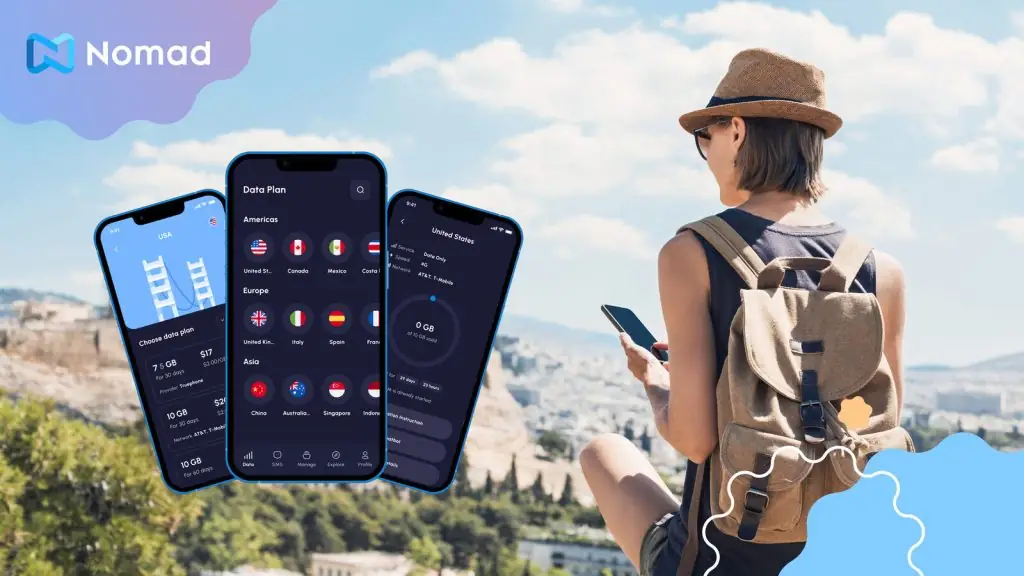
Nomad caught my attention during a month-long trip across Thailand, Vietnam, and Cambodia. Their Asia-Pacific plans are among the most competitive, and I even used their Europe bundles last winter in Berlin and Prague.
- Plans & Pricing: Regional Asia plans start at just $6 for 1GB, making it one of the cheapest eSIM Australia for international travel if you’re hopping around Oceania. Their Europe bundles compete closely with Airalo’s.
- Ease of Use: The app is sleek and easy to navigate—buy, download, and activate in under ten minutes.
- Coverage: Particularly strong across South East Asia, with reliable local network partnerships.
- Pros: Competitive regional pricing, stable data speeds, and frequent promo codes for top-ups.
- Cons: Global plans aren’t as cheap as competitors; occasional issues with customer support response time.
- Best For: Travelers focusing on Asia or Europe who need cheap, reliable data plans.
- Insider Tip: Nomad’s referral bonuses can shave off a couple of dollars, making already cheap bundles even more affordable.
4. Ubigi

I first tried Ubigi on a business trip to Canada, where their plans stood out for reliability and professional support. While not always the absolute cheapest international eSIM, their combination of performance and customer service makes them a strong pick.
- Plans & Pricing: Packages start at around $9 for 1GB in North America, with multi-country bundles that are ideal for frequent fliers.
- Ease of Use: Their SIM Manager app works smoothly across iPhone and Android, and setting up via QR code is painless.
- Coverage: Strong in North America and Europe, with growing options in Latin America.
- Pros: Stable speeds, excellent customer support, and clear setup instructions.
- Cons: Slightly higher rates compared to the cheapest eSIM USA providers.
- Best For: Business travelers who prioritize support over squeezing every last cent.
- Insider Tip: Ubigi often includes free bonus data when you activate a new plan—worth checking the manufacturer’s website for deals.
5. GigSky
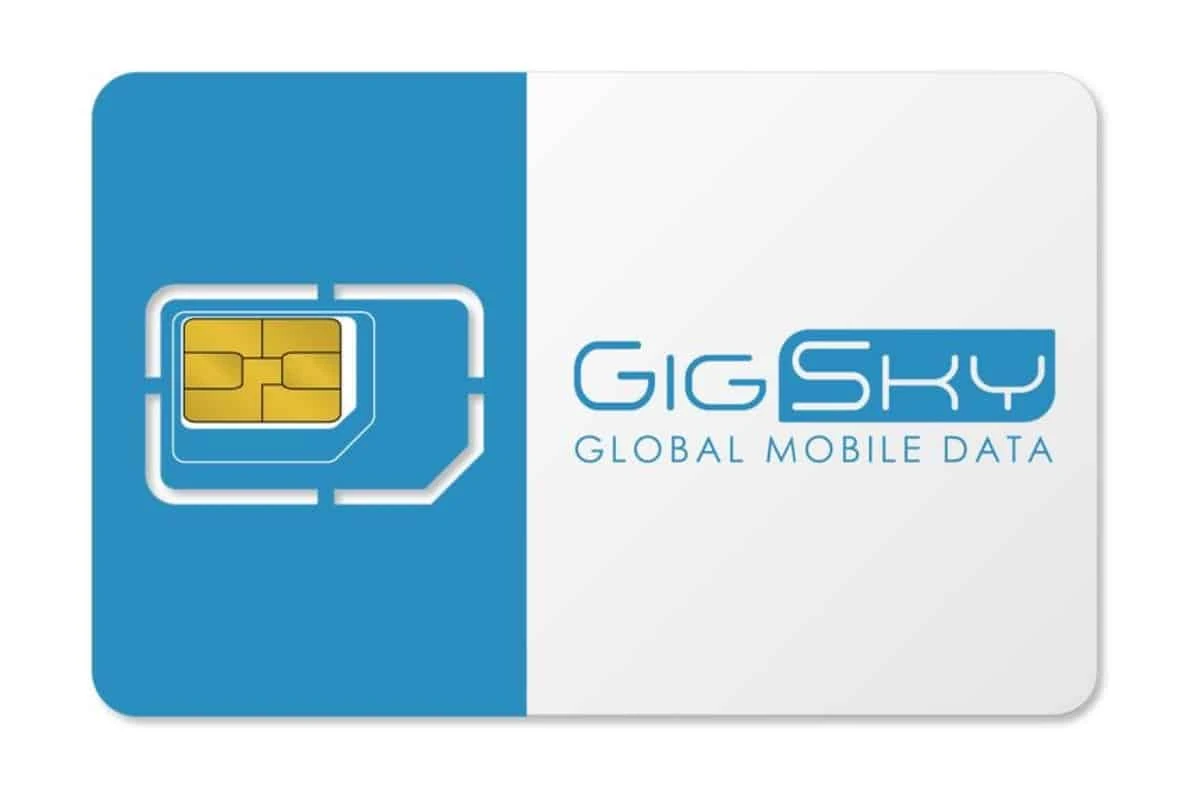
GigSky has been around since the early days of digital SIM cards, and I’ve relied on them several times in places where newer providers lacked coverage. From a road trip across the United States of America to surfing in Costa Rica, GigSky has proven surprisingly reliable.
- Plans & Pricing: Not always the cheapest eSIM data plans on paper, but they offer flexible daily packages starting at $10. Good for short trips.
- Ease of Use: The app is polished, though sometimes plan activation takes longer than Airalo or Nomad.
- Coverage: Solid global reach, covering 190+ countries, including tough regions like the Caribbean and parts of Africa.
- Pros: Wide availability, trustworthy service, and easy top-up options.
- Cons: Pricing can add up quickly for heavy data users, and daily rates aren’t ideal for long trips.
- Best For: Travelers who prioritize coverage over the absolute lowest price.
- Insider Tip: Their family-sharing option is useful if you’re traveling with multiple devices—you can manage several lines under one account.
6. Truphone
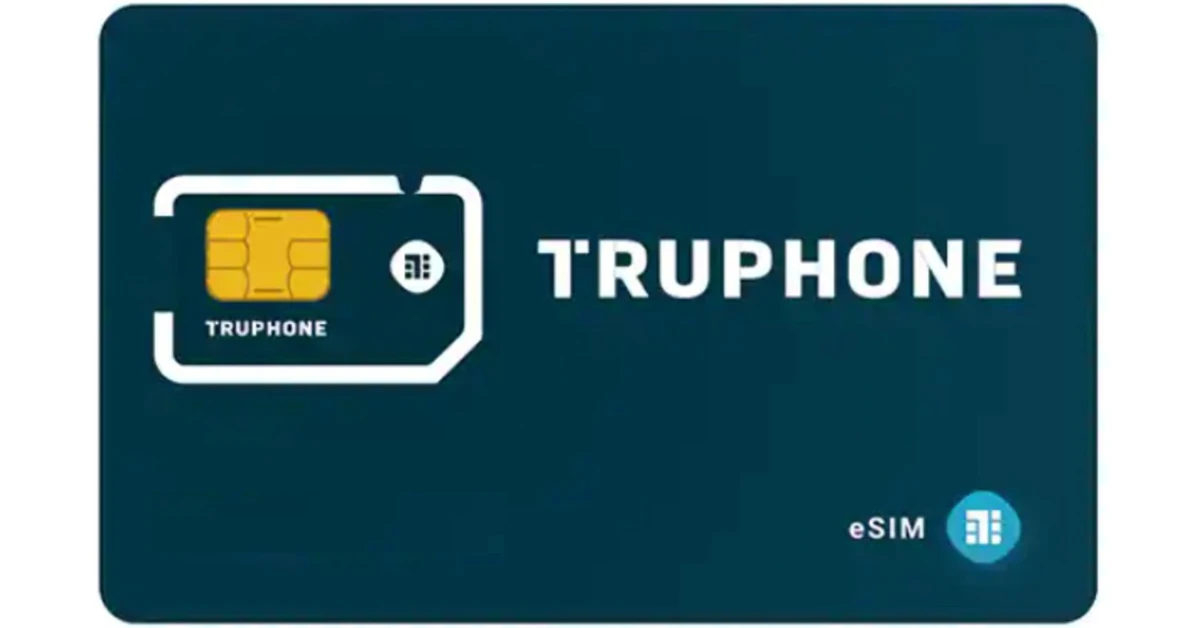
Truphone is a name I first came across in corporate travel circles. While not as well-known among backpackers, it’s a strong contender if you’re looking for stable bundles across multiple continents.
- Plans & Pricing: Their global plans often undercut roaming charges, with $15–$20 bundles for multiple countries. While not always the cheapest global eSIM, it’s consistent.
- Ease of Use: Truphone’s setup is smooth with most modern smartphones; I’ve activated it successfully on an Apple iPhone XS and a Google Pixel.
- Coverage: Excellent across Europe, Asia, and North America, though patchy in smaller Pacific nations.
- Pros: Reliable for corporate users, transparent billing, and professional-grade customer support.
- Cons: Less appealing for budget backpackers; better for travelers who value consistency.
- Best For: Business travelers or long-term expats who don’t want surprises.
- Insider Tip: Truphone sometimes partners with airlines and airports, so you might find promo codes hidden in inflight magazines or lounges.
7. BNESIM
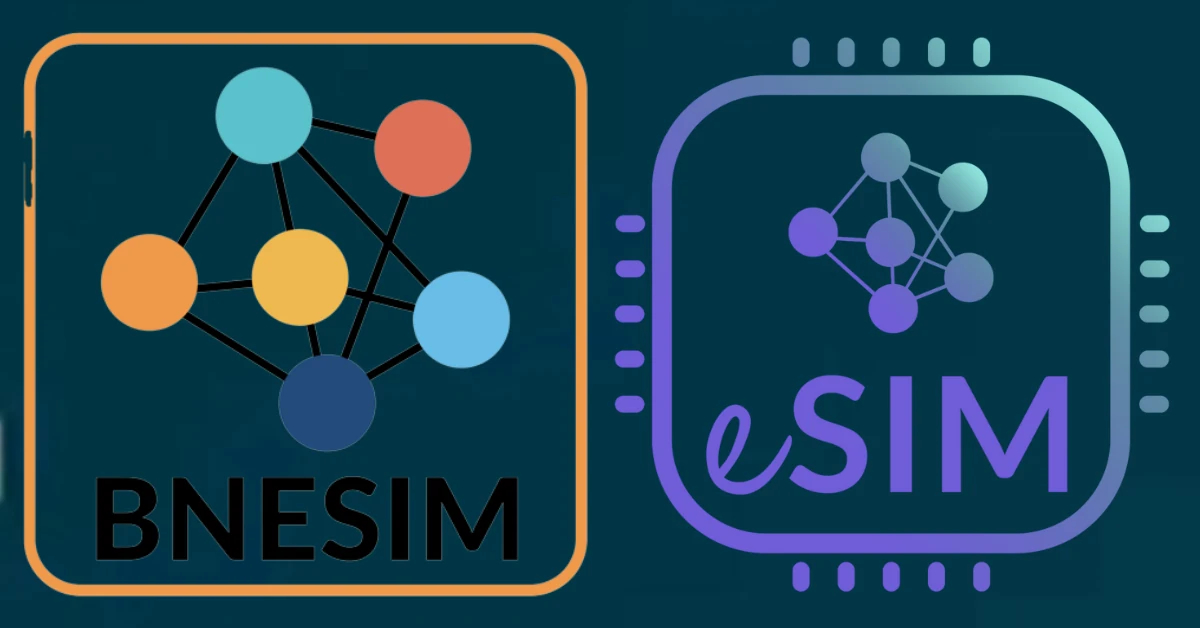
BNESIM takes a different approach with its pay-as-you-go model, which I tested while slow-traveling through Italy and Greece. Instead of fixed bundles, you top up only what you need, making it flexible and often cheaper for light users.
- Plans & Pricing: Pricing depends on usage—great for light data users. It’s not the cheapest eSIM carrier if you’re streaming videos, but unbeatable if you just need WhatsApp, Google Maps, and email.
- Ease of Use: Setup is straightforward; I found the app interface a bit clunky but manageable.
- Coverage: Global reach, but you’ll need to check specific countries before relying on it.
- Pros: Flexibility, affordable rates for light use, no wasted data.
- Cons: Can get expensive for heavy users, and support is slower compared to other eSIM providers.
- Best For: Minimalists who want cheap global eSIM options without committing to large bundles.
- Insider Tip: If you travel slowly and don’t need constant streaming, BNESIM can cut your data bill in half compared to unlimited plans.
8. Orange Holiday eSIM
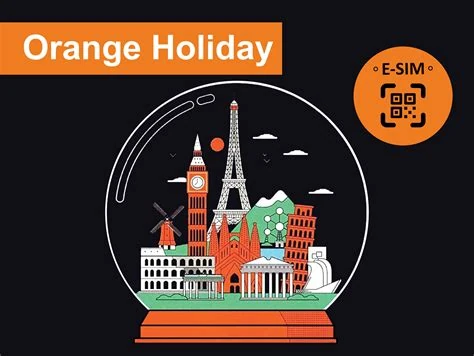
Orange Holiday eSIM has long been a favorite among travelers heading to Europe. I first used it while staying near Place de la République in Paris, and it remains one of the most reliable options for anyone exploring multiple EU countries.
- Plans & Pricing: Their flagship plan is €19.99 for 14 days with 12GB of data. Not the absolute cheapest eSIM for international travel, but strong value considering it includes a local French number for calls and texts.
- Ease of Use: Setup is simple via QR code, and the included phone number is handy for restaurant bookings or accessing local banking sites.
- Coverage: Robust coverage across the European Union and parts of the UK.
- Pros: Data plus phone number, excellent reliability, strong local networks.
- Cons: Limited appeal outside Europe; data expires quickly if not used.
- Best For: Travelers planning road trips or rail passes through multiple European countries.
- Insider Tip: Buy directly from the Orange website rather than third-party resellers—you’ll often find bonus data offers.
9. Flexiroam
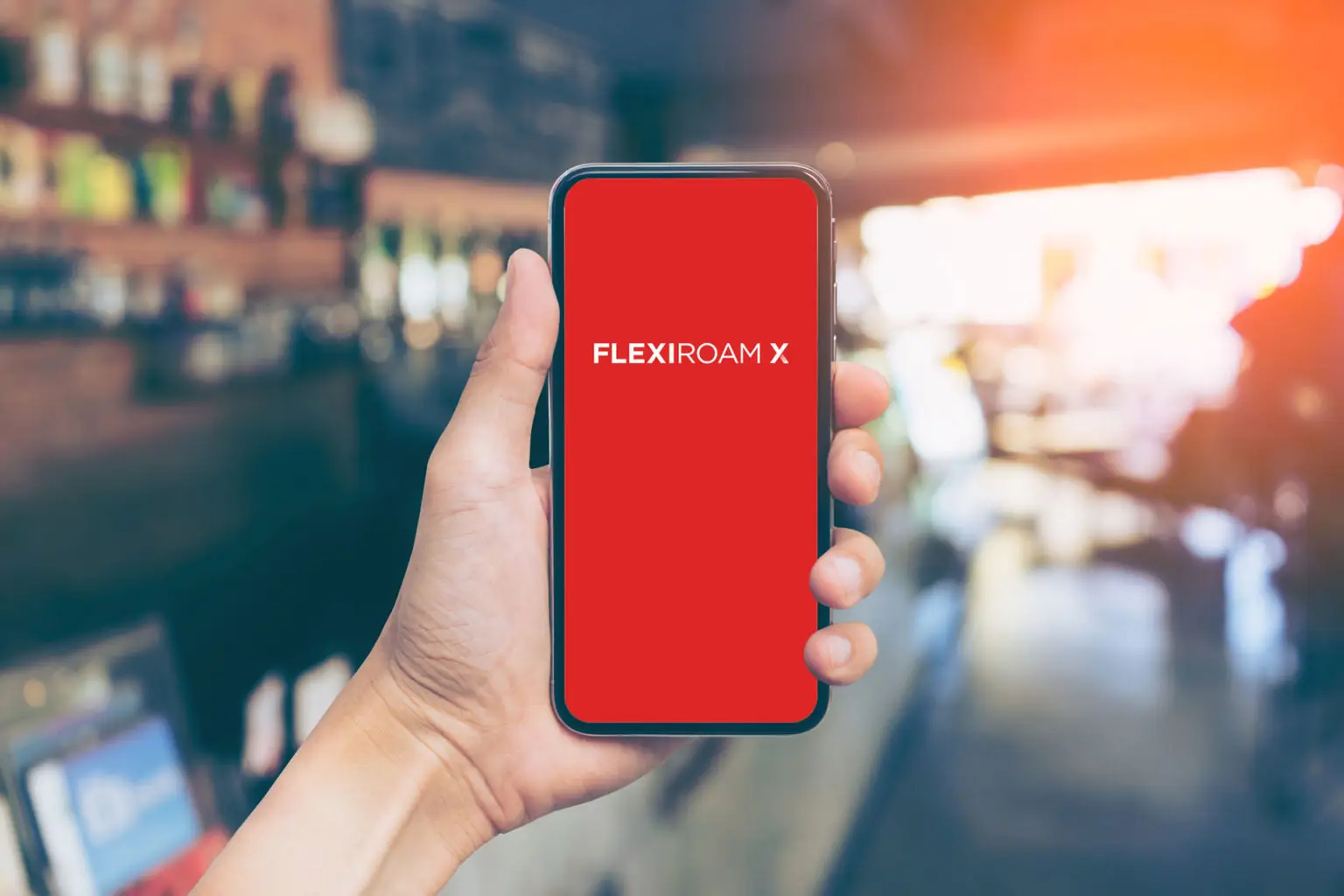
Flexiroam is particularly strong in the Asia-Pacific region. I relied on it during a surf trip to Bali and later across Malaysia, and it performed better than expected compared to global bundles.
- Plans & Pricing: Regional Asia-Pacific packages start around $5 for 1GB. They also offer global passes, but those aren’t the cheapest global eSIM options.
- Ease of Use: Setup is smooth through their app, though topping up occasionally took longer than Airalo or Nomad.
- Coverage: Strong across Asia, Australia, and even parts of Latin America.
- Pros: Affordable regional data, consistent connectivity, good user reviews.
- Cons: Global plans are pricier than competitors, and some users report slowdowns in rural areas.
- Best For: Budget-conscious travelers across Asia-Pacific who want reliable, affordable rates.
- Insider Tip: Flexiroam frequently offers referral bonuses and promo codes—worth checking before you travel.
10. SimOptions

SimOptions isn’t a provider in itself but an aggregator. I’ve used their platform to compare offers before a trip to Argentina, and it saved me hours of research. They often bundle the cheapest international eSIM plans from multiple carriers.
- Plans & Pricing: Prices vary widely, but it’s often where you’ll find the cheapest eSIM plan Canada, Singapore, or the USA depending on your destination.
- Ease of Use: Simple purchasing process on their website, though plan activation depends on the actual carrier you choose.
- Coverage: Global reach through multiple providers, giving flexibility no single eSIM carrier can match.
- Pros: One-stop shop, easy comparison, often the cheapest bundles.
- Cons: Customer support depends on the chosen carrier, not SimOptions directly.
- Best For: Travelers who want the absolute cheapest eSIM for international travel and don’t mind a bit of setup variation.
- Insider Tip: Always read user reviews on SimOptions before purchase—since they work with multiple providers, quality can vary.
11. Emerging Player: GlobalConnect eSIM (2025 Launch)
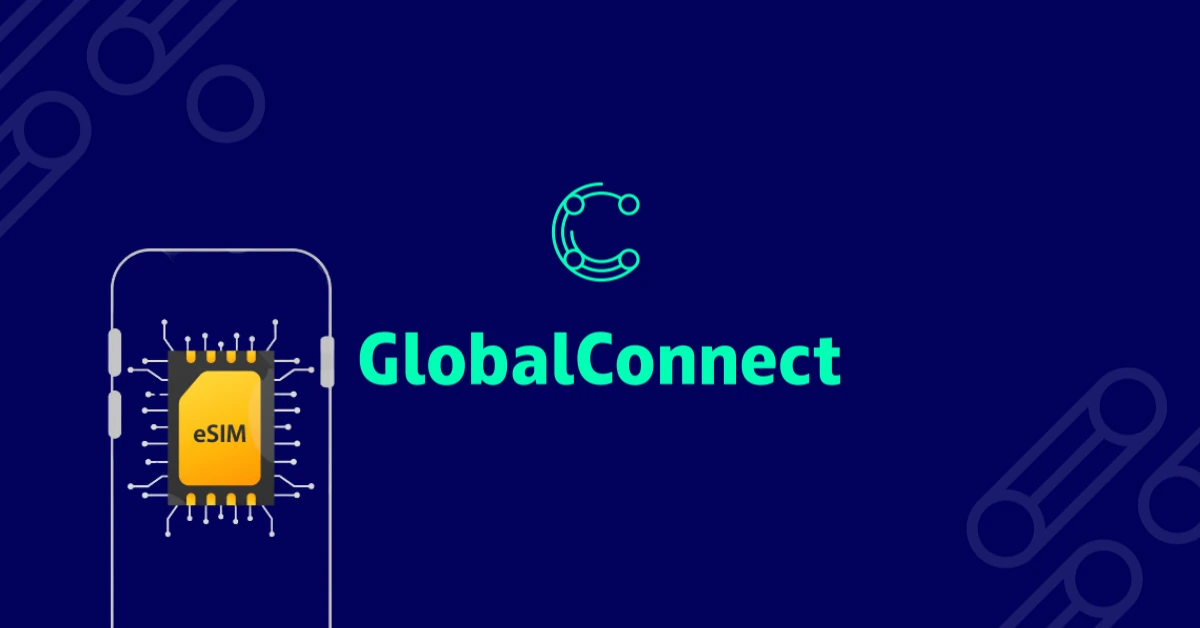
New to the scene in 2025, GlobalConnect eSIM launched with aggressive pricing. I trialed it during a short trip through Mexico and the Caribbean, where they undercut established competitors by nearly 30%.
- Plans & Pricing: Global plan at $25 for 5GB valid across 100+ countries. It’s positioning itself as the cheapest eSIM carrier for budget travelers who want one plan worldwide.
- Ease of Use: App-based installation via Google Play and iOS, with instant QR code activation.
- Coverage: Still expanding, but solid across North America, Europe, and parts of Asia.
- Pros: Affordable rates, simple interface, no hidden fees.
- Cons: Limited history—since it’s new, long-term reliability is unproven.
- Best For: Early adopters looking for the cheapest global eSIM option in 2025.
- Insider Tip: They’re currently running launch promotions with extra data included—worth grabbing before prices inevitably rise.
Cost Comparison: Cheapest eSIM by Region (2025 Edition)
One of the lessons I’ve learned after years of testing eSIM providers across 40+ countries is that the cheapest eSIM for international travel depends heavily on where you’re going.
A provider that looks like the cheapest global eSIM may work in theory, but in practice, regional bundles often beat them on value and reliability. Here’s how things stack up by region in 2025.
Europe
In Europe, competition is fierce. I’ve used both Airalo and Orange Holiday eSIM while hopping trains between Paris, Brussels, and Berlin. Airalo’s Europe regional plan comes in at around $5 per GB, making it one of the cheapest eSIM data options for budget travelers.
Orange Holiday is slightly pricier, but it includes a French phone number for calls and SMS—useful for booking restaurants or accessing local banking sites.
- Best Pick for Budget Travelers: Airalo (regional plan, flexible top-ups).
- Best for Convenience: Orange Holiday eSIM (data + phone number).
Asia-Pacific
Nomad and Flexiroam dominate here. While testing across Thailand, Bali, and Singapore, Nomad consistently delivered the best mix of price and stability.
Their Asia-Pacific bundles often cost $6 for 1GB, making them the cheapest eSIM plan Singapore travelers can grab before exploring multiple countries in the region. Flexiroam comes close, and in Australia, it sometimes beats Nomad on per-GB pricing.
- Best Value: Nomad (low per-GB costs, reliable local networks).
- Runner-Up: Flexiroam (great for Australia + South East Asia).
North America
In the United States of America, prices remain higher than in Asia or Europe. Ubigi and Holafly are strong options, but SimOptions often lists the cheapest eSIM USA bundles by aggregating multiple carriers. Expect to pay around $8–$10 per GB unless you opt for Holafly’s unlimited data plans.
- Best for Short Trips: SimOptions (cheapest prepaid eSIM plans in the USA).
- Best for Heavy Data Use: Holafly (unlimited data, but watch for throttling).
Latin America
Coverage can be tricky in Latin America. During my time in Mexico, Colombia, and Argentina, Airalo’s Latin America regional plan was the most dependable, though not always the cheapest eSIM carrier.
SimOptions sometimes lists better short-term deals. Expect $7–$9 per GB in most countries, though speeds vary between urban centers and rural regions.
- Best Coverage: Airalo (strong regional partnerships).
- Best Budget Find: SimOptions (cheaper short-term plans).
Middle East & Africa
This is where global bundles still matter. I tested Truphone in Morocco and BNESIM in South Africa, and while neither offered rock-bottom prices, they worked where others failed. The cheapest global eSIM options here usually cost $10–$12 per GB, but the reliability is worth it.
- Best for Reliability: Truphone (stable connections, professional support).
- Best for Flexibility: BNESIM (pay-as-you-go model works well if data use is light).
Global Plans
If you’re crossing multiple regions in one trip, global plans are the simplest. Airalo’s global eSIM, priced around $20 for 3GB, is often the cheapest international eSIM for multi-country travel.
The new GlobalConnect eSIM launched in 2025 undercut the competition with $25 for 5GB across 100+ countries.
- Best Overall: Airalo (proven reliability, instant connectivity).
- Best Newcomer: GlobalConnect (cheapest global eSIM 2025 launch promo).
Cost Comparison Table (2025)
| Region | Cheapest Provider | Average Cost per GB | Best For |
|---|---|---|---|
| Europe | Airalo | ~$5 | Budget travelers |
| Asia-Pacific | Nomad | ~$6 | Regional explorers |
| North America | SimOptions | ~$8–$10 | Short trips |
| Latin America | Airalo | ~$7–$9 | Reliable coverage |
| Middle East & Africa | Truphone / BNESIM | ~$10–$12 | Reliability & flexibility |
| Global Plans | Airalo / GlobalConnect | ~$6–$8 (averaged) | Multi-region travel |
From my experience, the cheapest eSIM plan Canada or Singapore isn’t necessarily the same as the cheapest eSIM data option in Europe or Africa.
That’s why it’s critical to match your provider to your travel route instead of chasing a one-size-fits-all cheapest eSIM for international travel.
How to Set Up Your eSIM for International Travel (Step-by-Step)
Switching from a physical SIM card to a digital one can feel intimidating at first, but in practice, setting up the cheapest eSIM for international travel is straightforward once you know the steps.
Over the past few years, I’ve installed eSIMs everywhere from airport lounges in Singapore to tiny cafés in Buenos Aires, and the process has become smoother with each update from providers. Here’s the step-by-step approach I recommend:
Step 1: Buy Your Plan
Most providers now sell prepaid eSIM plans directly through their websites or dedicated apps like the Airalo app, Ubigi’s SIM Manager, or Nomad’s mobile interface.
Whether you’re purchasing the cheapest eSIM plan Canada or looking for the cheapest eSIM plan Singapore before your flight, the checkout process usually takes under five minutes. Payment is processed instantly, and confirmation comes by email or app notification.
Step 2: Install via QR Code or App
Once you’ve purchased your plan, you’ll receive either a QR code or direct app-based installation instructions. On my iPhone XR, I simply scanned the QR code sent by Airalo, and within seconds, the eSIM profile was added to my phone.
On Android devices, you often install through Google Play with just one tap. This process eliminates the need for a physical SIM card swap, which was always risky while juggling tiny trays in airports.
Step 3: Configure APN (if needed)
Most modern providers configure your APN settings automatically, but occasionally you’ll need to enter them manually.
I learned this the hard way in Papua New Guinea, where mobile data wouldn’t connect until I entered the APN details listed on the provider’s manufacturer’s website. It’s a small step, but worth checking if your internet connection doesn’t fire up immediately.
Step 4: Test Data Before Departure
I always recommend activating your eSIM before leaving home. Whether it’s the cheapest eSIM USA plan or a cheapest global eSIM bundle, testing connectivity ensures you won’t be stuck at immigration without internet.
A quick Google Maps search or WhatsApp message is enough to confirm you’re connected. This also gives you time to troubleshoot with customer support if something goes wrong.
Step 5: Switch Active Data Line Abroa
Once you land, open your phone’s SIM Manager settings and toggle the eSIM as your active data line. Keep your home SIM active for receiving calls or SMS (important for banking sites or two-factor logins), but route mobile data through your travel eSIM.
This hybrid setup—home SIM + cheapest international eSIM—lets you stay secure while saving on roaming fees.
💡 Pro Tip from Experience: Some providers, like BNESIM and GlobalConnect, let you store multiple eSIM profiles at once. Before my recent trip through Europe and Asia, I loaded both a regional eSIM for Europe and the cheapest eSIM carrier plan for Asia-Pacific. Switching between them mid-trip took seconds—no new purchases, no extra setup.
By following these steps, you’ll ensure instant connectivity the moment you land, whether you’re using the cheapest eSIM data plan for Singapore, a prepaid eSIM plan for Canada, or a global bundle covering 100+ countries. It’s one of those travel hacks that once you try, you’ll never go back to juggling physical SIM cards.
Tips to Save Even More on International eSIMs
Even if you’ve already picked the cheapest eSIM for international travel, there are still ways to stretch your budget further.
After years of trial and error—sometimes overspending on unlimited data, sometimes squeezing the most out of prepaid eSIM plans—I’ve figured out a few strategies that consistently save money without sacrificing connectivity.
1. Choose Regional Plans Over Global Ones
While global coverage sounds appealing, I’ve learned that regional eSIMs almost always provide better value. For example, during a month hopping between Vietnam, Thailand, and Singapore, Nomad’s Asia-Pacific bundle cost me half of what a cheapest global eSIM would have. Unless your trip spans multiple continents, stick to regional options for the lowest cost per GB.
2. Use Promo Codes and Referral Bonuses
Providers like Airalo, Flexiroam, and SimOptions regularly release promo codes through their apps, newsletters, or even Google Play listings. I’ve saved up to 15% on the cheapest eSIM plan Singapore just by applying a code during checkout. Referral bonuses are another hidden gem—share your link with a friend, and both of you earn credits toward prepaid eSIM plans.
3. Top-Up Instead of Re-Purchasing Full Plans
One mistake I used to make was buying a whole new eSIM package once my data ran out. In many cases, topping up your existing plan is cheaper and faster. For instance, with Ubigi in Canada, a top-up cost me $8, while buying a fresh plan would have been $12. Always check the top-up option in your SIM Manager app before purchasing again.
4. Combine WiFi with eSIM for Hybrid Savings
In destinations where WiFi is reliable—think cafes in Europe or co-working spaces in Bali—I switch my mobile data off and rely on WiFi, keeping my eSIM data for navigation and urgent tasks. This method helped me stretch the cheapest eSIM data plan I bought in Mexico for nearly two weeks instead of just one.
5. Know When Unlimited is Worth It
Holafly’s unlimited data plans aren’t the cheapest eSIM carrier options on paper, but they can save money if you’re a heavy user. On a recent trip to Spain, I used more than 20GB uploading photos and videos. Paying per GB would have cost me twice as much as Holafly’s unlimited plan. The trick is being honest about your habits—if you’re only using Google Maps and WhatsApp, stick with capped prepaid eSIM plans.
💡 Insider Note: Many providers now include extras like web protection, ad blocker features, or virtual location tools with their plans. While these aren’t strictly necessary, I’ve found them handy when accessing banking sites abroad. They don’t change the core pricing, but they do add value to an already cheap international eSIM plan.
Saving money on connectivity isn’t about cutting corners—it’s about matching the right provider and plan to your travel style. Whether you’re chasing the cheapest eSIM plan Canada for a ski trip, the cheapest eSIM USA for a road trip, or the cheapest global eSIM for a year-long round-the-world journey, these small strategies can make a noticeable difference in your budget.
Common Mistakes to Avoid When Buying the Cheapest eSIM
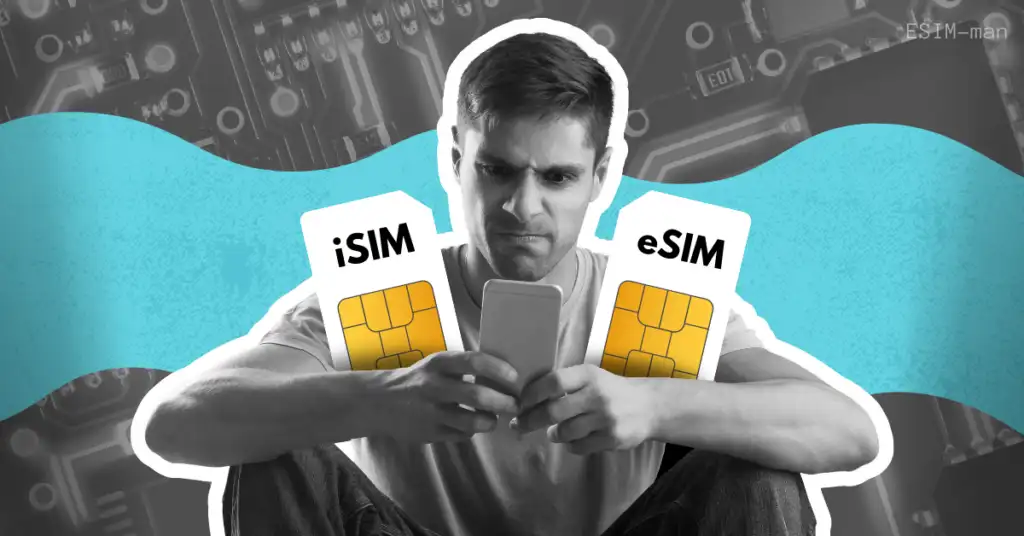
Even the most experienced travelers slip up when chasing the cheapest eSIM for international travel. I’ve made some of these mistakes myself—usually at the worst possible moment, like standing at customs in a new country without an internet connection. Here are the pitfalls I’ve learned to avoid, so you don’t repeat them.
1. Buying the Cheapest Plan Without Checking Coverage
The biggest trap is assuming the cheapest eSIM carrier automatically works everywhere. On a trip to Morocco, I picked what looked like the cheapest global eSIM, only to realize it had no local network partnerships in rural areas. Always check coverage maps on the provider’s website before buying, especially if your travels take you beyond big cities.
2. Forgetting to Unlock Your Device
It sounds basic, but I’ve met countless travelers who purchased the cheapest eSIM plan Singapore or the cheapest eSIM USA, only to find their phones were carrier-locked. Without an unlocked phone, no eSIM—no matter how cheap—will work internationally. Double-check with your carrier before leaving home.
3. Over-Relying on Unlimited Data Plans
Unlimited data sounds perfect, but most come with hidden throttling after a certain threshold. I experienced this firsthand with Holafly: after 10GB, speeds slowed to a crawl, making Google Maps barely usable. If you only need mobile data for navigation, emails, and messaging, stick with capped prepaid eSIM plans. They’re usually cheaper and more reliable than “unlimited.”
4. Ignoring Plan Expiration Dates
One overlooked detail is plan validity. I once bought the cheapest eSIM data plan in Mexico, thinking 5GB would last me a month. In reality, the plan expired in 15 days. Many providers, including Airalo and Nomad, tie data bundles to specific durations (7, 15, or 30 days). Always check how long your prepaid eSIM plan is valid—not just how much data it includes.
5. Skipping Customer Support Research
When your QR code fails to install mid-journey, responsive customer support is invaluable. Providers like Ubigi and Airalo offer 24/7 live chat, while smaller cheapest eSIM carriers sometimes rely on email-only support that can take days. I learned this the hard way while trying to fix an activation issue in Argentina. Look for providers that back up cheap data with reliable service.
💡 Pro Traveler Reminder: Before departure, always load your eSIM profile at home. Test it with a quick speed check or a WhatsApp call to confirm it works. It’s the simplest way to guarantee instant connectivity once you land.
My Closing Thoughts
Avoiding these mistakes ensures that when you pick the cheapest eSIM for international travel—whether in Canada, Singapore, or across South East Asia—you’re not just saving money but securing smooth, stress-free connectivity.
After years of juggling physical SIM cards, airport kiosks, and unpredictable roaming charges, I can say with confidence that the cheapest eSIM for international travel in 2025 has changed the game for travelers everywhere.
Whether you’re hopping across Europe, backpacking through South East Asia, or road-tripping across the United States of America, there’s now an affordable prepaid eSIM plan that fits your style.
The best value doesn’t always mean the absolute lowest sticker price. Sometimes the cheapest global eSIM works perfectly if you’re crossing multiple continents. Other times, regional bundles—like the cheapest eSIM plan Singapore or the cheapest eSIM plan Canada—deliver the best price per GB. It’s all about matching your data needs with the right provider.
What hasn’t changed is the importance of reliability. Local networks, customer support, and ease of setup matter just as much as cost. The cheapest eSIM data deal isn’t really a deal if you can’t get Google Maps to load or if customer support takes three days to reply.
So before your next trip, compare the cheapest eSIM carriers, check coverage maps carefully, and load your profile at home. With instant connectivity waiting at touchdown, you’ll travel smarter, spend less, and never waste time hunting for a physical SIM card again.
People Also Ask (FAQs)
1. Which eSIM is the cheapest globally in 2025?
Airalo and GlobalConnect are currently competing for the cheapest global eSIM, with Airalo offering $20 for 3GB and GlobalConnect’s new plan at $25 for 5GB.
2. Is an eSIM really cheaper than local SIM cards?
Yes, especially for short trips. While local SIMs can sometimes be cheaper for long stays, the cheapest eSIM for international travel saves time, offers instant connectivity, and avoids hidden roaming fees.
3. Can I keep my WhatsApp number with an eSIM?
Absolutely. Your WhatsApp remains tied to your original phone number, even when using a prepaid eSIM plan for mobile data.
4. How much data do I really need for a 2-week trip?
Most travelers use between 3–7GB over two weeks, depending on habits. If you stream videos or use maps constantly, aim for at least 10GB.
5. Do budget eSIMs work in rural areas?
Not always. The cheapest eSIM carriers often rely on local networks, which can be weaker outside cities. Check coverage maps carefully.
6. What is the most affordable eSIM for Europe?
Airalo’s regional bundle is usually the cheapest eSIM plan in Europe, though Orange Holiday offers excellent value if you also need a local phone number.
7. Does eSIM work internationally on all phones?
Most modern phones (like iPhone XR and later, or recent Android models) support eSIM. Always check your device compatibility before buying.
8. Can I buy an eSIM in advance of travel?
Yes. In fact, I recommend it. Installing your eSIM profile at home lets you test connectivity before departure, ensuring instant access abroad.
9. Is an eSIM worth it for international travel?
Without a doubt. The cheapest eSIM for international travel offers flexibility, affordable data, and stress-free setup compared to traditional SIM cards.
10. Which is better: Airalo or Holafly?
It depends on your needs. Airalo usually has the cheapest eSIM data bundles, while Holafly is better for unlimited data users—though throttling applies.
11. Is eSIM cheaper than roaming in Europe?
Yes. Traditional roaming often costs $10+ per day, while prepaid eSIM plans in Europe can cost as little as $5 per GB.
12. Does Airtel eSIM work internationally?
Yes, Airtel eSIM works internationally if you activate international roaming. However, it’s usually far more expensive than the cheapest international eSIM providers.
Recent Posts
 How to Reach Yukevalo Island: Complete Route Guide 2025
How to Reach Yukevalo Island: Complete Route Guide 2025 How to Visit Victoria Falls the Smoke That Thunders in 5 Days (No-Stress Guide)
How to Visit Victoria Falls the Smoke That Thunders in 5 Days (No-Stress Guide) 20 Surreal Places in Mexico That Feel Too Dreamy to Be Real (2025)
20 Surreal Places in Mexico That Feel Too Dreamy to Be Real (2025) What Makes Santiago Ways the Most Trusted Camino Agency?
What Makes Santiago Ways the Most Trusted Camino Agency? What Makes Orbis Ways the Go-To Choice for Outdoor Travel Enthusiasts?
What Makes Orbis Ways the Go-To Choice for Outdoor Travel Enthusiasts?









